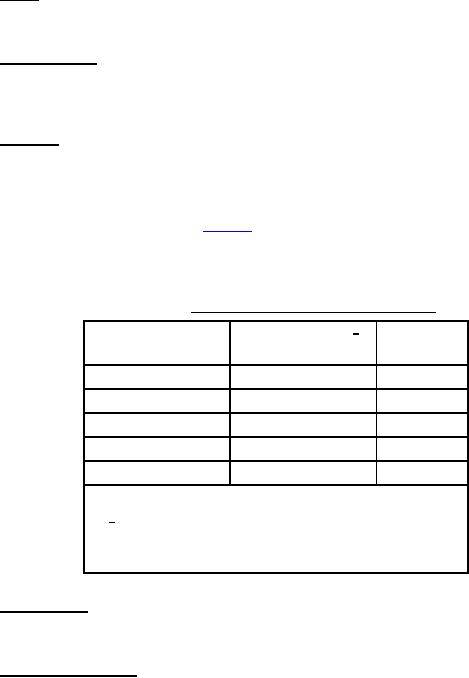
MIL-DTL-24402F(SH)
4.6.1.1 Shock. Filter assemblies and differential pressure indicators shall be subjected to a shock test as
specified in MIL-S-901 for Grade A, Class I equipment. There shall be no evidence of damage, malfunction, or
external leakage at the conclusion of the test or during subsequent tests (see 4.6.1.2 through 4.6.1.10).
4.6.1.2 Fatigue impulse. For filter assemblies and differential pressure indicators with a fatigue pressure rating,
the fatigue pressure rating shall be verified as specified in NFPA T2.6.1. The cyclic test pressure to be used shall be
determined by multiplying the rated fatigue pressure by applicable test duration and variability factors specified in
NFPA T2.6.1 to obtain a 90 percent assurance level based on a 90 percent confidence level.
4.6.1.3 Vibration. Differential pressure indicators shall be subjected to a vibration test as specified in
MIL-STD-167-1, Type I. For this test, inlet pressure shall be between 2,700 and 3,000 lb/inē, and the outlet shall be
unpressurized. There shall be no evidence of damage, malfunction, or external leakage at the conclusion of the
vibration test or during subsequent tests. As an alternative to MIL-STD-167-1, Type I requirements, the vibration
requirements may be met by vibrating the indicators in each of the three principal directions in accordance with the
time, frequencies, and amplitudes specified in table III, followed by a 1-hour endurance test in each direction at the
highest resonant frequency noted. If no resonant frequency is noted, the endurance test shall be conducted at
50 hertz.
TABLE III. Vibratory displacement single amplitude.
Table amplitude 1/
Frequency range
Time
(inch, minimum)
(Hz)
(minutes)
4 to 15
0.05
2
16 to 25
0.04
1
26 to 33
0.03
1
36 to 40
0.02
1
41 to 50
0.01
1
NOTE:
1/
For Government-conducted tests, the maximum
amplitude shall not exceed the minimum required
amplitude by more than 20 percent.
4.6.1.4 Proof pressure. A proof pressure, as specified in 3.6.3, shall be applied to the filter housing and
differential pressure indicators and held for 2 minutes. For qualification, this test shall be performed after the
completion of shock and fatigue impulse tests.
4.6.1.5 Housing pressure drop. This test shall be conducted with a dummy element installed as specified in
3.5.4. Using the test fluid, the maximum pressure drop between the inlet and outlet of the filter housing at rated
flow shall not exceed the value specified in the applicable specification sheet. Rated flow for each filter housing
shall be as specified in the applicable specification sheet.
9
For Parts Inquires submit RFQ to Parts Hangar, Inc.
© Copyright 2015 Integrated Publishing, Inc.
A Service Disabled Veteran Owned Small Business